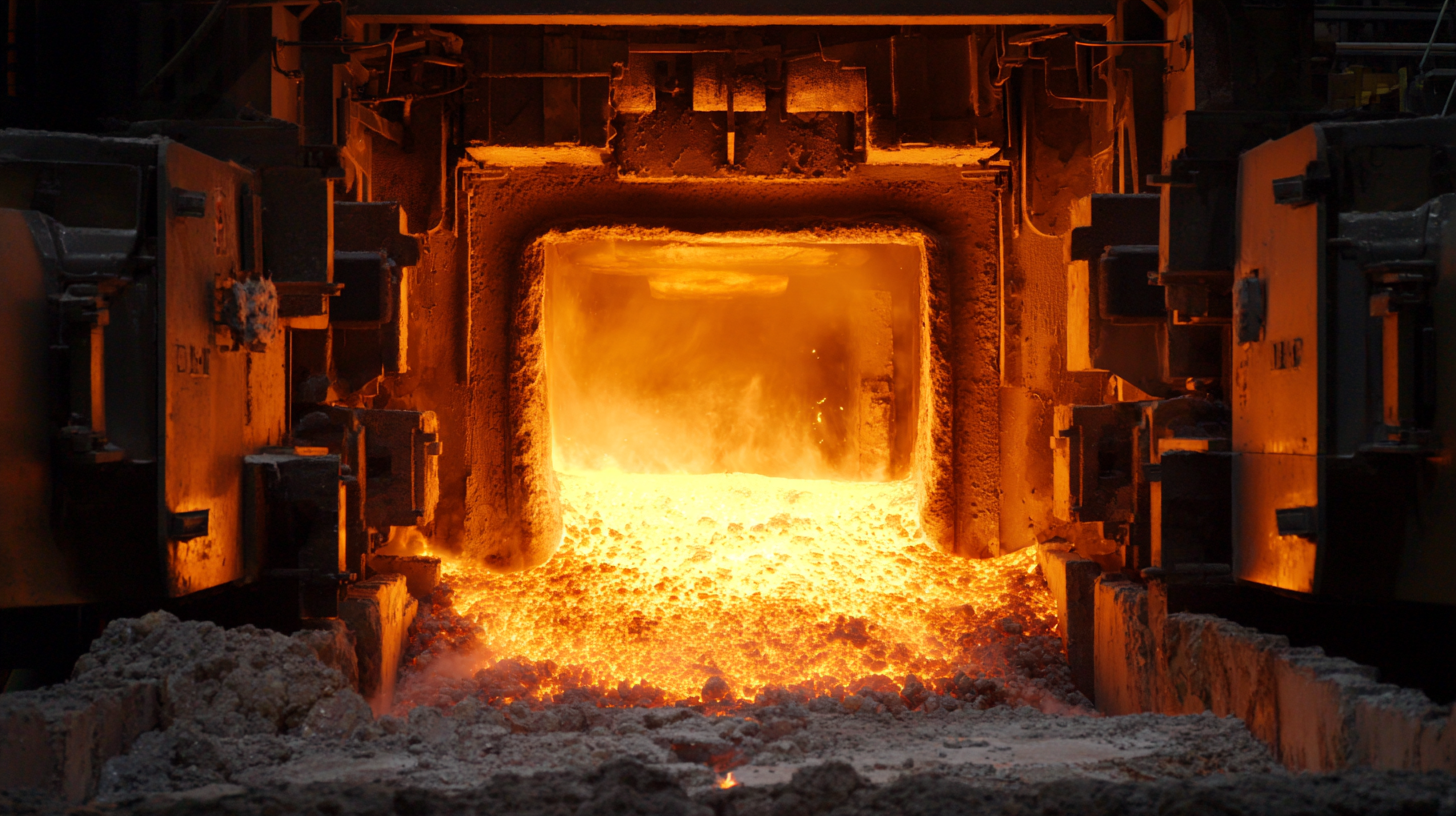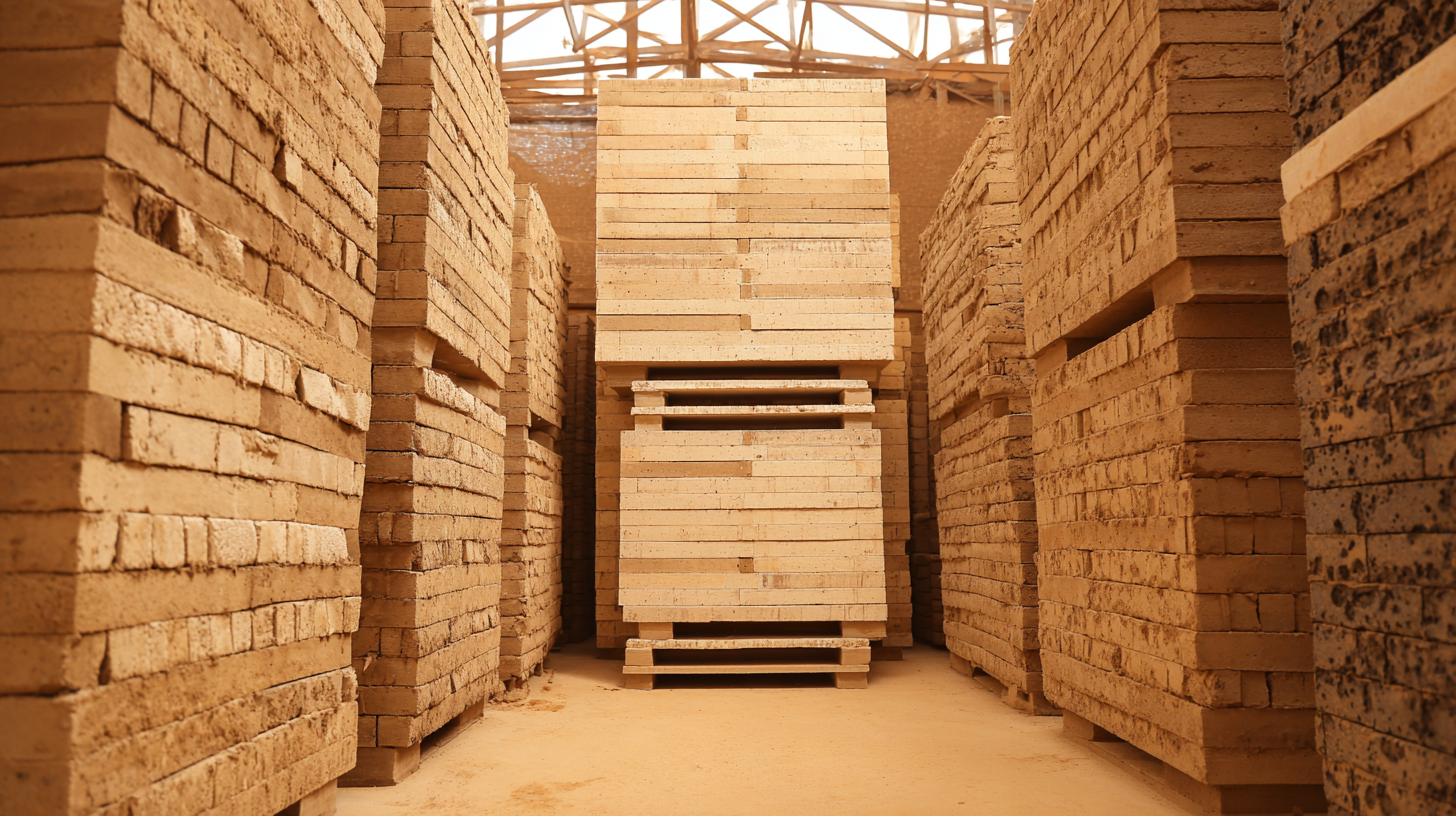Leave Your Message
In today's rapidly advancing industrial landscape, the role of refractory saggers has become increasingly pivotal across various sectors. A recent report by Arizton Advisory and Intelligence highlights that the global refractory materials market is projected to reach USD 36.71 billion by 2027, with a compound annual growth rate (CAGR) of 4.88%. This growth is fueled by the rising demand for high-performance materials in industries such as steel, ceramics, and glass manufacturing. The innovative utilization of refractory saggers not only enhances production efficiency but also contributes to improved product quality and sustainability. As we delve into the exceptional manufacturing practices emerging from China, we uncover how these advancements in refractory sagger technology are setting a new benchmark for service across global industries, thus reinforcing the notion that "卓越制造,源自中国,服务全球.

 When selecting a high-quality refractory sagger supplier, it's essential to look for key characteristics that ensure durability and reliability. According to a recent industry report by MarketsandMarkets, the global market for refractory materials is projected to reach $31.2 billion by 2025, which underscores the growing demand for quality in construction and manufacturing processes. Suppliers that emphasize advanced manufacturing techniques and use high-grade raw materials tend to provide saggers that offer superior thermal resistance and structural integrity.
When selecting a high-quality refractory sagger supplier, it's essential to look for key characteristics that ensure durability and reliability. According to a recent industry report by MarketsandMarkets, the global market for refractory materials is projected to reach $31.2 billion by 2025, which underscores the growing demand for quality in construction and manufacturing processes. Suppliers that emphasize advanced manufacturing techniques and use high-grade raw materials tend to provide saggers that offer superior thermal resistance and structural integrity.
Tips: Always request samples to evaluate the material quality before making large orders. Additionally, consider suppliers that have established certifications, such as ISO 9001, to ensure adherence to international quality standards.
Furthermore, potential buyers should assess the supplier’s experience in the industry. The right vendor should not only possess technical expertise but also have an understanding of the specific requirements for different applications in sectors like ceramics or metal manufacturing. Data from the Ceramic Industry magazine indicates that refractory saggers with tailored designs provide better performance, which can enhance production efficiency by up to 20%.
Tips: Engage with the supplier's technical team to gain insights into their design capabilities, which can significantly impact your operational effectiveness.
The global market for refractory saggers is witnessing significant growth, driven by increasing demand across various industries. According to recent reports, the silica sand market is projected to reach a value of $12.16 billion in 2023, with an anticipated growth to $13.1 billion in 2024, ultimately reaching $23.7 billion by 2032. This impressive compound annual growth rate (CAGR) of 7.7% underlines the robust expansion within sectors that utilize refractory materials, highlighting the essential role of refractory saggers in processes such as metal casting and ceramics production.
In addition to silica sand, the magnesium oxide market is expected to see steady growth, with an estimated value of $7.71 billion in 2025, projected to rise to $8.53 billion by 2033, reflecting a CAGR of 1.1%. This growth is a testament to the increasing application of magnesium oxide within refractory materials, contributing significantly to thermal insulation and stability in high-temperature settings. Furthermore, the overall market for frozen products is estimated to grow from $35.98 billion in 2024 to $57.29 billion by 2032, indicating a consistent demand for high-quality refractory products, including saggers, which ensure efficiency and durability in manufacturing processes.
When evaluating refractory sagger quality and performance metrics, it is essential to focus on several key attributes that determine their effectiveness across various industries. First and foremost, thermal stability plays a critical role; high-quality refractory saggers should maintain their structural integrity under extreme temperatures. Testing for thermal shock resistance is equally important, as this measure indicates how well the sagger can handle rapid temperature changes without cracking or deforming. Additionally, assessing chemical resistance is crucial, particularly in industries exposed to corrosive materials. The ability of refractory saggers to withstand harsh chemical environments ensures longevity and reliability in production processes.

Another important metric to consider is dimensional accuracy, which directly affects the fit and performance of saggers in specific applications. A careful examination of the manufacturing tolerances will provide insights into the precision of the product. Furthermore, assessing the manufacturing process can reveal how consistent the quality is across different batches. Employing standardized testing methods and quality assurance protocols not only helps in identifying high-performance refractory saggers but also provides a benchmark for comparing different suppliers. By focusing on these best practices, industries can optimize their selection process, ensuring that they choose refractory saggers that meet their stringent operational needs.
The durability of refractory saggers has seen remarkable advancements due to innovations in materials technology. According to a report by Market Research Future, the refractory materials market is projected to reach $30 billion by 2025, highlighting the demand for highly resilient products in industries such as ceramics, glass, and metallurgy. Advanced materials, including zirconia and alumina-based composites, are increasingly used in the fabrication of saggers, which enhances their thermal stability and mechanical strength. Recent studies indicate that these materials can withstand temperatures exceeding 1,600°C, extending the lifespan of saggers and reducing operational costs.
In the glass industry, for instance, the implementation of cutting-edge refractory materials has resulted in a significant reduction in sagger degradation rates, with some manufacturers reporting improvements of up to 50% in service life. This not only leads to lower replacement frequency but also decreases the energy consumption associated with production processes. The World Refractories Association has noted that higher-quality refractory materials contribute to improved product quality and consistency, further underscoring the critical role of innovation in enhancing the longevity and performance of refractory saggers across global industries.
| Industry | Refractory Sagger Type | Material Used | Durability Improvement (%) | Temperature Resistance (°C) |
|---|---|---|---|---|
| Ceramics | Silicon Carbide | High Purity Silicon Carbide | 30 | 1200 |
| Glass | Alumina-Based | Alumina and Zirconia | 25 | 1400 |
| Metallurgy | Magnesia-Based | Magnesia Spinel | 40 | 1500 |
| Cement | Fire Clay | Refractory Fire Clay | 15 | 1100 |
| Energy | Composite | Carbon-Infused | 35 | 1600 |
Refractory saggers play a crucial role in various industries, particularly in the ceramics and metal processing sectors. One compelling case study involves a leading ceramics manufacturer that integrated advanced refractory saggers into their kiln operations. By switching to high-performance models, they significantly reduced thermal losses and improved product quality. This innovation not only boosted their production efficiency but also led to a decrease in energy consumption, showcasing the dual benefits of enhanced performance and sustainability.
Another fascinating example comes from the glass manufacturing industry. A prominent company implemented refractory saggers designed for high-temperature applications, which allowed for seamless transport of glass during the melting process. This upgrade minimized material distortion and reduced the risk of defects, resulting in higher yields and lower reject rates. The successful deployment of these saggers illustrates the importance of tailoring refractory solutions to specific industrial needs.
**Tips:** When considering the implementation of refractory saggers, assess the temperature requirements and materials being processed to ensure compatibility. Regular maintenance and monitoring can also help enhance the lifespan and efficiency of refractory products, maximizing your investment. Finally, don’t overlook the potential benefits of consulting with refractory experts to identify customized solutions that align with your operational goals.
